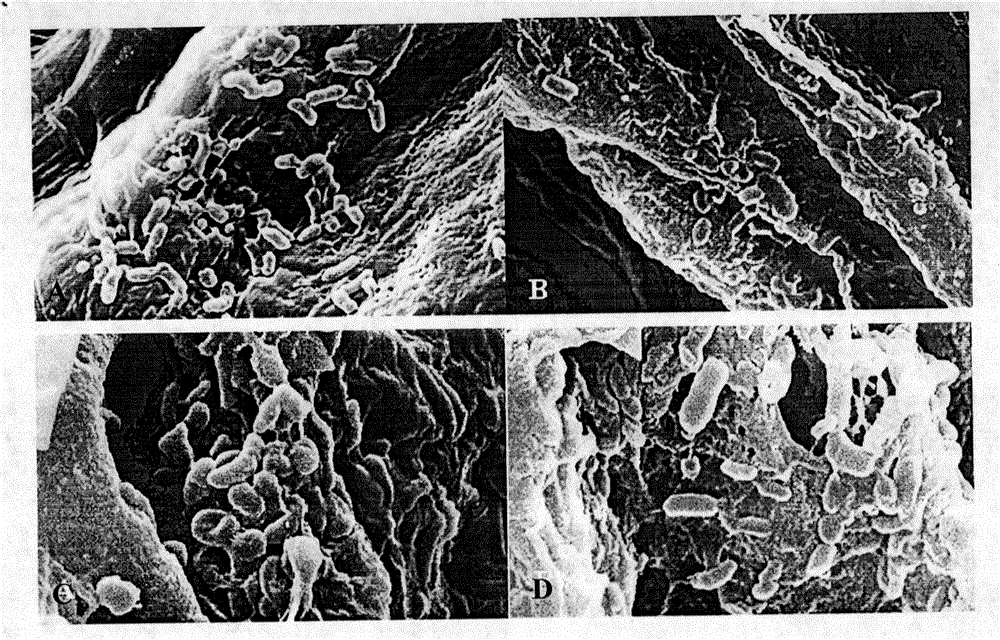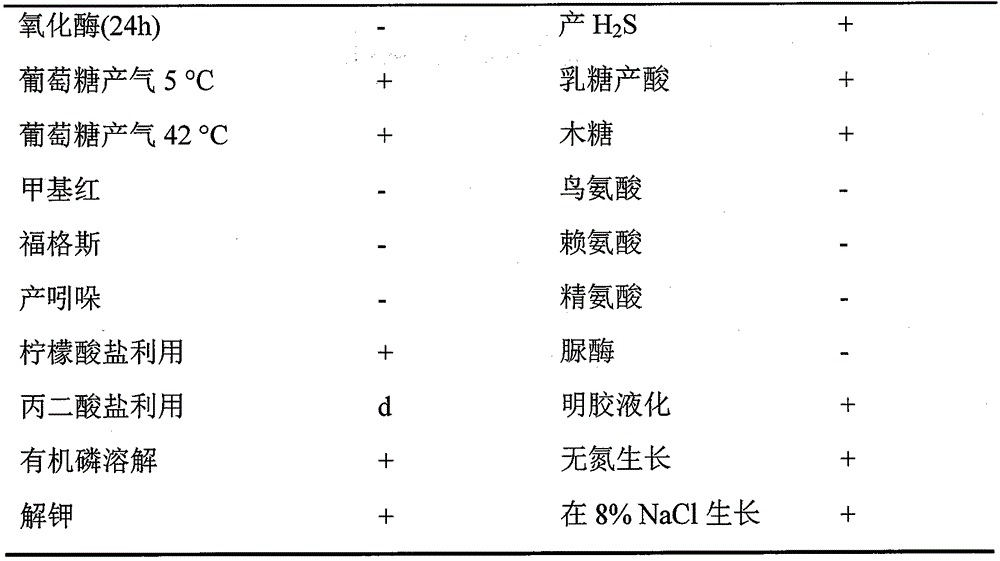Enterobacter cloacae SRPG-70 and application thereof in salt stress relieving and growth promoting
A technology of Enterobacter cloacae and strains, which is applied in the field of agricultural biology, can solve the problems of few reported strains, achieve stable application effects, reduce the use of chemical fertilizers, and relieve salt stress
- Summary
- Abstract
- Description
- Claims
- Application Information
AI Technical Summary
Problems solved by technology
Method used
Image
Examples
Embodiment 1
[0017] Example 1: Identification of Physiological and Biochemical Properties
[0018] Physiological and biochemical characteristics and 16S rDNA molecular identification were carried out on the salt-dissolving-promoting bacteria SRPG-70, and the species of the salt-dissolving-promoting bacteria was determined from the molecular level.
[0019] The identification results are shown in Table 1.
[0020] Table 1 Physiological and biochemical characteristics of strain SRPG-70
[0021]
[0022]
[0023] +: Positive; -: Negative
[0024] 16S rDNA identification
[0025] The size of the 16S rDNA sequence fragment of SRPG-70 obtained by sequencing is 1459bp. The sequence homology comparison analysis was carried out on the NCBI website. Combined with the identification results of physiological and biochemical characteristics, the morphological, physiological and biochemical characteristics of the strain SRPG-70 are consistent with Enterobacter cloacae feature. Thus identified,...
Embodiment 2
[0026] Example 2: Determination of bacterial colonization after inoculation of Enterobacter cloacae SRPG-70 bacteria under salt stress conditions
[0027] The colonization of Enterobacter cloacae SRPG-70 was observed and analyzed by scanning electron microscope (SEM) (JSM-670 of Tokyo JEOL Company, Japan). Cotton root samples were treated with a series of ethanol solutions, finally dehydrated with 100% acetone, and again critical point dried with liquid carbon dioxide using the CPD 030 (BAL-TEC, Germany) method. Then the sample was sprayed with gold (sputter coater SCD, 005, BAL-TEC, Germany) and then examined by scanning electron microscope.
[0028] The scanning electron microscope observation results of the samples taken from the base of the rhizome, the middle of the root and the tip of the root showed that the strain SRPG-70 had colony distribution in each root segment, and the root segment of the root of the rhizome had a higher density of bacteria, which were generally ...
Embodiment 3
[0029] Example 3: Effect of inoculating Enterobacter cloacae SRPG-70 on cotton biomass under salt stress conditions
[0030] Treat cotton seeds with bacteria. When the cotton grows to the three-leaf stage in the saline-alkaline soil pot test, measure the length from the growth point to the root tip of all the plants in the same treatment, that is, the plant height, and take the average value, which is the average plant height of the treated plants. high. Weigh the total weight of all the plants of the same treatment, then place them in a drying oven, kill them at 110°C for 10 minutes, then transfer them to 80°C for 24 hours to constant weight, take them out and weigh them. The total weight before drying was divided by the number of weighed plants to obtain the average fresh weight of the treated plants. The total weight after drying was divided by the number of weighed plants to obtain the average dry weight of the treated plants. The growth of potted cotton is shown in Tabl...
PUM
| Property | Measurement | Unit |
|---|---|---|
| diameter | aaaaa | aaaaa |
Abstract
Description
Claims
Application Information
 Login to View More
Login to View More - R&D
- Intellectual Property
- Life Sciences
- Materials
- Tech Scout
- Unparalleled Data Quality
- Higher Quality Content
- 60% Fewer Hallucinations
Browse by: Latest US Patents, China's latest patents, Technical Efficacy Thesaurus, Application Domain, Technology Topic, Popular Technical Reports.
© 2025 PatSnap. All rights reserved.Legal|Privacy policy|Modern Slavery Act Transparency Statement|Sitemap|About US| Contact US: help@patsnap.com



